Krampen
In November 1943, the royal social board decided that a detention camp for Soviet prisoners of war would be established in Krampen outside Skinnskatteberg, Västmanland County. These prisoners had fled from German captivity in Norway and Finland and crossed the border into Sweden. Since Sweden was officially neutral, the prisoners of war could not be sent back to either Soviet Union or Germany. The camp was established in cooperation with the Soviet legation in Stockholm, which also provided financial resources. The camp was not the first camp to be set up. As early as 1942 a detention camp for Soviet citizens had been set up in Baggås mansion and a guest house called Udden in Baggbron, all in Västmanland.
Construction of the camp began in December 1943, and was built by soviet prisoners of war. The choice of location was due to its seclusion which made it problematic for prisoners and outsiders to get in touch with each other. From the Soviet side there were ideological motives to minimize the prisoners’ contact with all forms of Swedish culture. The nearby railway and station also contributed to the choice of location because it simplified transportation back and forth the camp. Another reason was all the state owned forest surrounding the camp where prisoners could work. A total of ten prisoner barracks, commandantur, socializing hall, dining room, pump house, laundry room and cellar were built. No fencing had to be erected around the camp.
The prisoners worked with forest work and road work and they received wages for which they could buy various goods. The work was of course of a much milder nature in comparison what they had fled from. They probably didn’t need to suffer during the stay in Krampen. Outside working hours, the prisoners could watch films and engage in other leisure activities, certainly activities and films approved by the Soviet legation. But it was only a matter of time before the prisoners would be sent back to Soviet Union. This happened when Soviet Union and Finland signed a peace agreement in September 1944. Already next month, two vessels from the port of Gävle departed with 900 Soviet citizens, including all 300 prisoners from Krampen.
What happened to the prisoners back in Soviet Union is not clear, but from Soviet side, prisoners of war were seen as potential traitors and probably a number of them ended up in camps, others were perhaps exiled to internal exile and it cannot be ruled out that some were executed. From Swedish point of view, they didn’t want to risk anything that could furiate the Soviets and the extradition was never discussed. After the war, Krampen came in the summer and autumn of 1945 to house refugees from Latvia, Romania and Jews. In November 1945, the camp was dismantled and a few years later it was demolished.
Current status: Demolished with information boards/monument (2015).
Location: 59° 44' 30" N 15° 34' 50" E
Get there: Car.
Follow up in books: Gilmour, John: Sweden, the Swastika and Stalin - The Swedish Experience in the Second World War (2011).
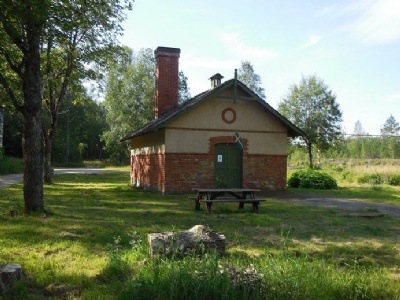

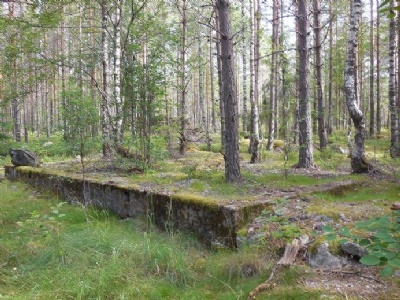
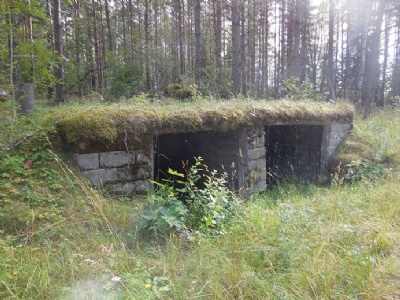
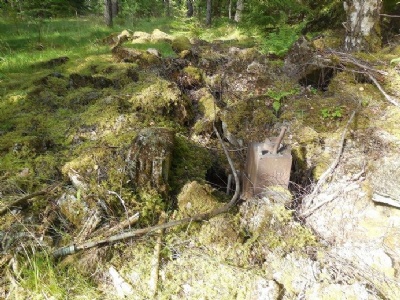
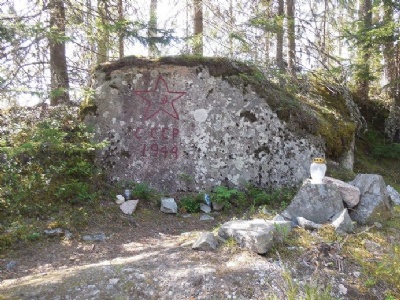

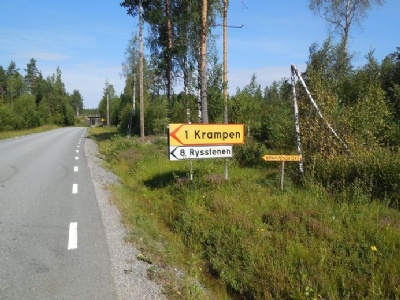
In 2006, excavation and documentation of the camp were made and nowadays there are a few information boards placed on the camp site. The old railway station is gone, but the laundry house is preserved. From other buildings, ruins and foundations remains and are easy to find as they are located by the side of the road. About seven kilometers southeast of the camp stands the "Russian stone". When the prisoners built a road, some prisoners probably took the opportunity to carve in the hammer, sickle and star and write CCCP on a stone next to the road. Next to the "Stone" is another monument that was established in 1999 commemorating the deportations for the approximately 2000 Soviet prisoners of war imprisoned in Sweden during the war. But the feeling is that the stone is really aimed at the fate the prisoners met on their arrival in Soviet Union rather than their captivity in Sweden.